 W
WThe Atlantic yellow-nosed albatross is a large seabird in the albatross family. The scientific name is from Ancient Greek. Thalassarche is from thalassa, "sea" and arkhe, "command", and chlororhynchos is from khloros, "yellow", and rhunkhos, "bill".
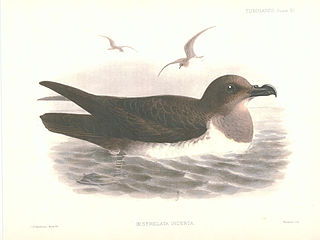 W
WThe Atlantic petrel is a gadfly petrel endemic to the South Atlantic Ocean. It breeds in enormous colonies on Tristan da Cunha and Gough Island, and ranges at sea from Brazil to Namibia, with most records at sea being to the west of the breeding islands, and along the subtropical convergence.
 W
WThe brown booby is a large seabird of the booby family, Sulidae, of which it is perhaps the most common and widespread species. It has a pantropical range, which overlaps with that of other booby species. The gregarious brown booby commutes and forages at low height over inshore waters. Flocks plunge-dive to take small fish, especially when these are driven near the surface by their predators. They only nest on the ground, and roost on solid objects rather than the water surface.
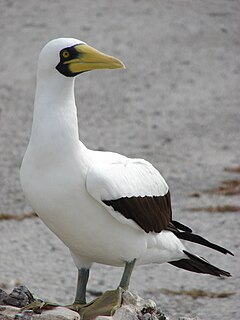 W
WThe masked booby, also called the masked gannet or the blue-faced booby, is a large seabird of the booby and gannet family, Sulidae. First described by the French naturalist René-Primevère Lesson in 1831, the masked booby is one of six species of booby in the genus Sula. It has a typical sulid body shape, with a long pointed yellowish bill, long neck, aerodynamic body, long slender wings and pointed tail. The adult is bright white with black wings, a black tail and a dark face mask; at 75–85 cm (30–33 in) long, it is the largest species of booby. The sexes have similar plumage. This species ranges across tropical oceans, except in the eastern Atlantic and eastern Pacific. In the latter, it is replaced by the Nazca booby, which was formerly regarded as a subspecies of masked booby.
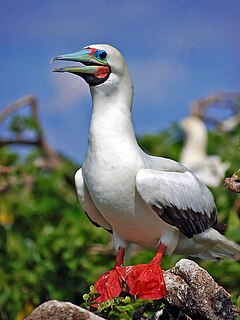 W
WThe red-footed booby is a large seabird of the booby family, Sulidae. Adults always have red feet, but the colour of the plumage varies. They are powerful and agile fliers, but they are clumsy in takeoffs and landings. They are found widely in the tropics, and breed colonially in coastal regions, especially islands. The species faces few natural or man-made threats, although its population is declining it is considered to be a least-concern species by the International Union for Conservation of Nature (IUCN).
 W
WThe lesser frigatebird is a seabird of the frigatebird family Fregatidae. At around 75 cm (30 in) in length, it is the smallest species of frigatebird. It occurs over tropical and subtropical waters across the Indian and Pacific Oceans as well as off the Atlantic coast of Brazil.
 W
WThe northern gannet is a seabird, the largest species of the gannet family, Sulidae. It is native to the coasts of the Atlantic Ocean, breeding in Western Europe and Northeastern North America. The sexes are similar in appearance. The adult northern gannet has a mainly white streamlined body with a long neck, long and slender wings. It is 87–100 cm (34–39 in) long with a 170–180 cm (67–71 in) wingspan. The head and nape have a buff tinge that is more prominent in breeding season, and the wings are edged with dark brown-black feathers. The long pointed bill is blue-grey, contrasting with black bare skin around the mouth and eyes. Juveniles are mostly grey-brown, becoming increasingly white in the five years it takes them to reach maturity.
 W
WThe black noddy or white-capped noddy is a seabird from the family Laridae. It is a medium-sized species of tern with black plumage and a white cap. It closely resembles the lesser noddy with which it was at one time considered conspecific. The black noddy has slightly darker plumage and dark rather than pale lores.
 W
WThe brown noddy or common noddy is a seabird in the family Laridae. The largest of the noddies, it can be told from the closely related black noddy by its larger size and plumage, which is dark brown rather than black. The brown noddy is a tropical seabird with a worldwide distribution, ranging from Hawaii to the Tuamotu Archipelago and Australia in the Pacific Ocean, from the Red Sea to the Seychelles and Australia in the Indian Ocean and in the Caribbean to Tristan da Cunha in the Atlantic Ocean. The brown noddy is colonial, usually nesting on elevated situations on cliffs or in short trees or shrubs. It only occasionally nests on the ground. A single egg is laid by the female of a pair each breeding season. In India the brown noddy is protected in the PM Sayeed Marine Birds Conservation Reserve.
 W
WLeach's storm petrel or Leach's petrel is a small seabird of the tubenose order. It is named after the British zoologist William Elford Leach. The scientific name is derived from Ancient Greek. Oceanodroma is from okeanos, "ocean" and dromos, "runner", and leucorhoa is from leukos, "white" and orrhos, "rump".
 W
WThe white-faced storm petrel, also known as white-faced petrel is a small seabird of the austral storm petrel family Oceanitidae. It is the only member of the monotypic genus Pelagodroma.
 W
WThe Trindade petrel is a species of seabird and a member of the gadfly petrels. The bird is 35–39 cm (14–15 in) in size, with an 88–102 cm (35–40 in) wingspan.
 W
WCory's shearwater is a large shearwater in the seabird family Procellariidae. The genus name Calonectris comes from Ancient Greek kalos, "good" and nectris, "swimmer", and borealis is Latin for "northern". The English name is after the American ornithologist Charles B. Cory.
 W
WThe great shearwater is a large shearwater in the seabird family Procellariidae. Ardenna was first used to refer to a seabird by Italian naturalist Ulisse Aldrovandi in 1603, and gravis is Latin for "heavy".
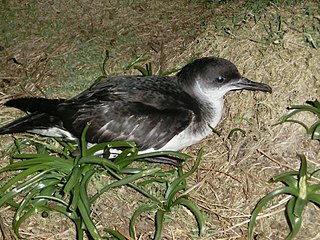 W
WThe Manx shearwater is a medium-sized shearwater in the seabird family Procellariidae. The scientific name of this species records a name shift: Manx shearwaters were called Manks puffins in the 17th century. Puffin is an Anglo-Norman word for the cured carcasses of nestling shearwaters. The Atlantic puffin acquired the name much later, possibly because of its similar nesting habits.
 W
WScopoli's shearwater is a bird in the family Procellariidae currently considered conspecific with Cory's shearwater. It has no subspecies. The genus name Calonectris comes from Ancient Greek kalos, "good" and nectris, "swimmer". The specific diomedea refers to Diomedes, the mythical king. His wife was serially unfaithful while he fought at Troy, so he left to found a city in Italy. After his death, his distraught friends were turned into white seabirds. The English name is for Italian naturalist Giovanni Antonio Scopoli who first described the species.
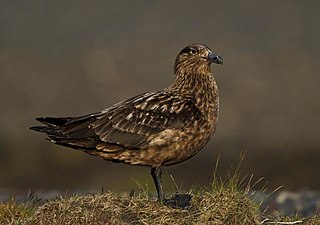 W
WThe great skua is a large seabird in the skua family Stercorariidae. It is roughly the size of a herring gull. It mainly eats fish which is taken from the surface of the sea or from other birds.
 W
WThe sooty tern is a seabird in the family Laridae. It is a bird of the tropical oceans which sleeps on the wing, returning to land only for breeding- on islands throughout the equatorial zone.
 W
WThe white tern is a small seabird found across the tropical oceans of the world. It is sometimes known as the fairy tern although this name is potentially confusing as it is also the common name of Sternula nereis. Other names for the species include angel tern and white noddy in English, and manu-o-Kū in Hawaiian.
 W
WThe white-tailed tropicbird (Phaethon lepturus) is a species of tropicbird. It is the smallest of three closely related seabirds of the tropical oceans and smallest member of the order Phaethontiformes. It is found in the tropical Atlantic, western Pacific and Indian Oceans. It also breeds on some Caribbean islands, and a few pairs have started nesting recently on Little Tobago, joining the red-billed tropicbird colony. In addition to the tropical Atlantic, it nests as far north as Bermuda, where it is locally called a "longtail".